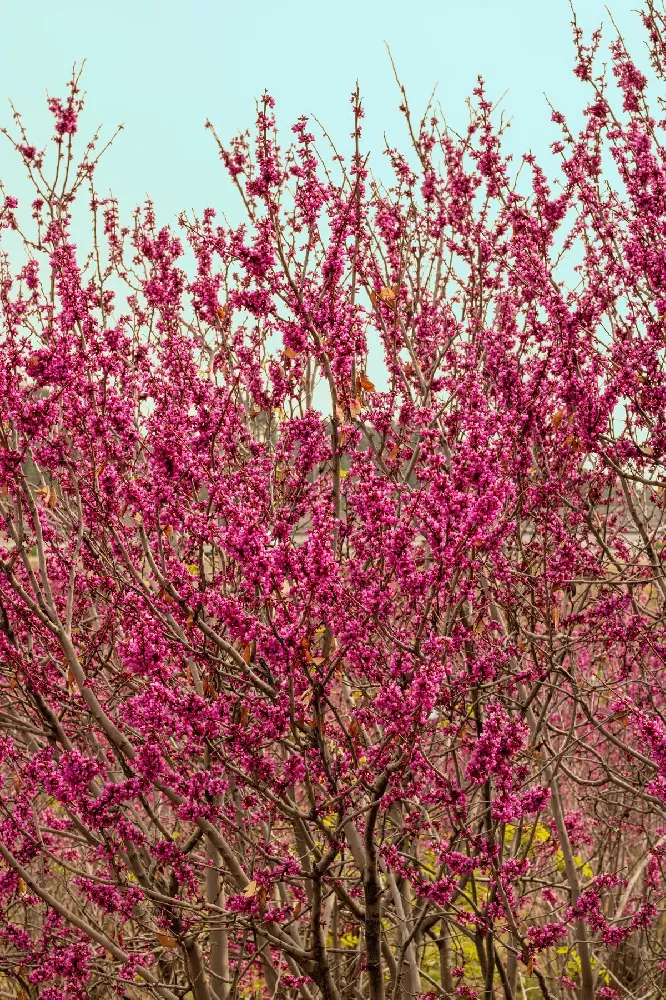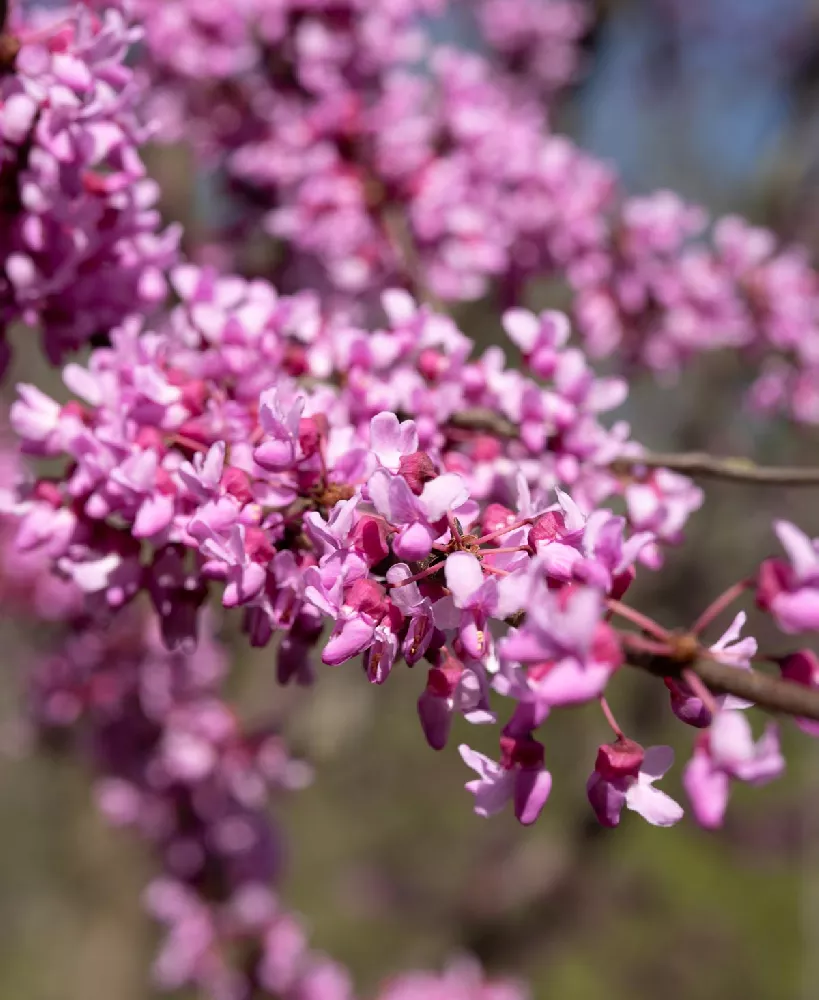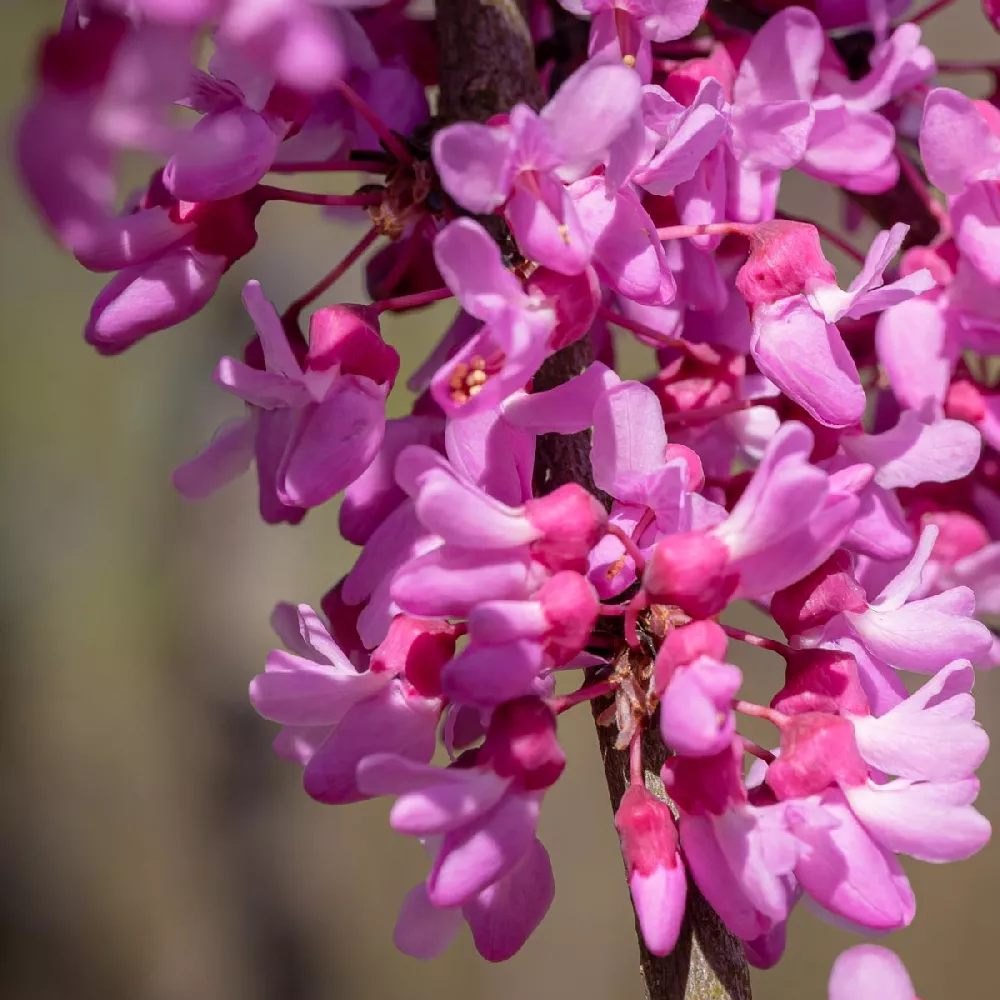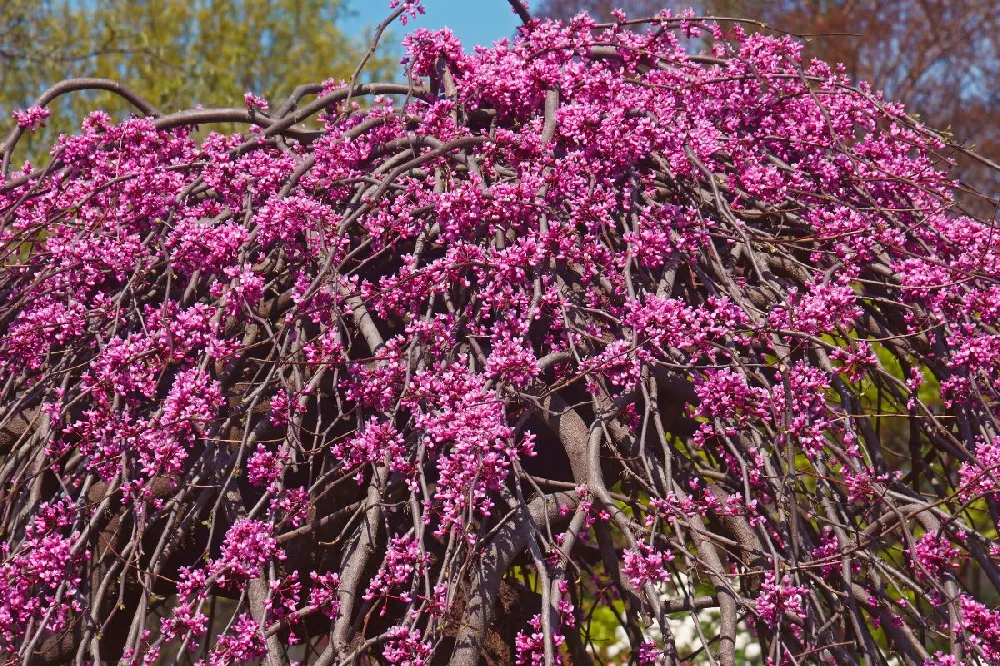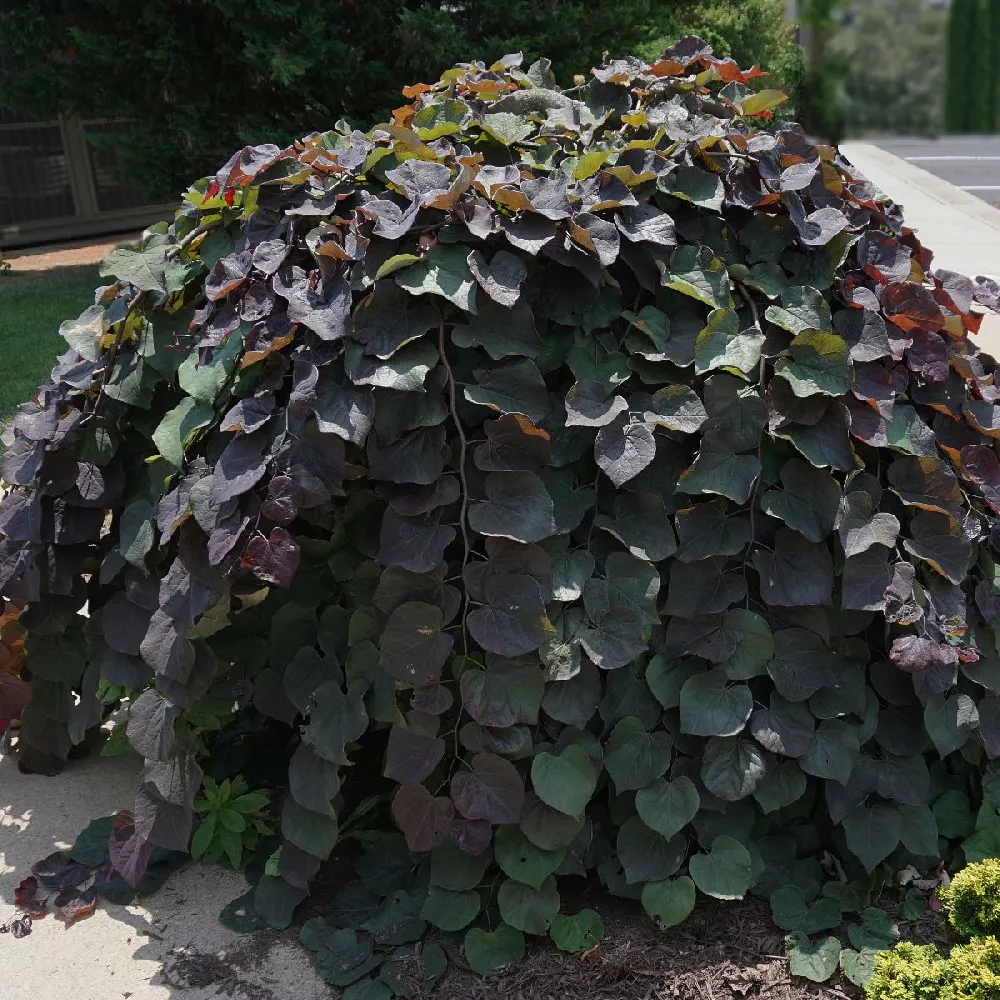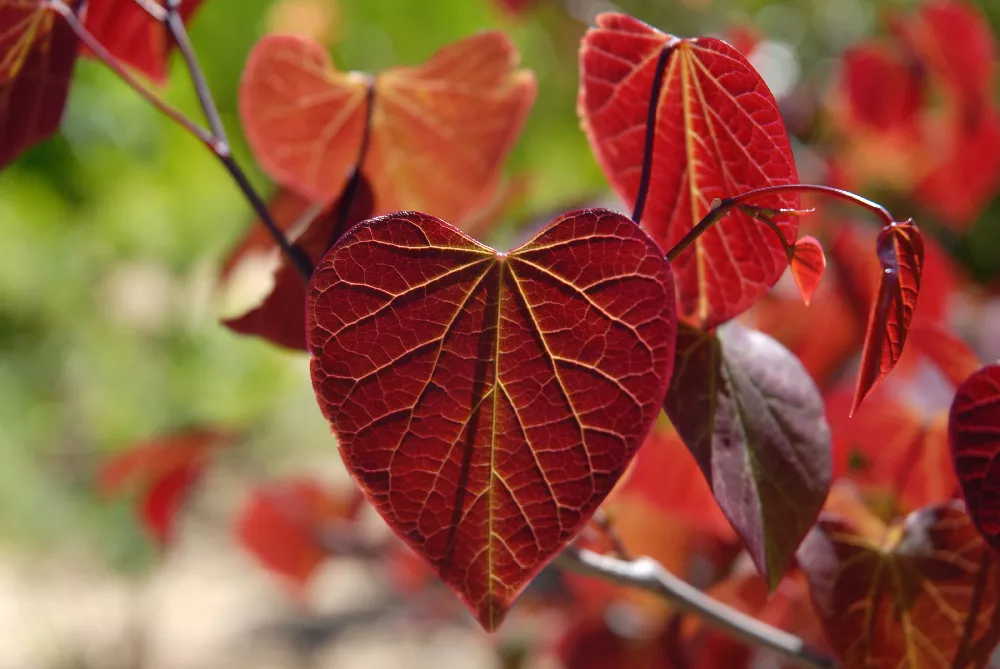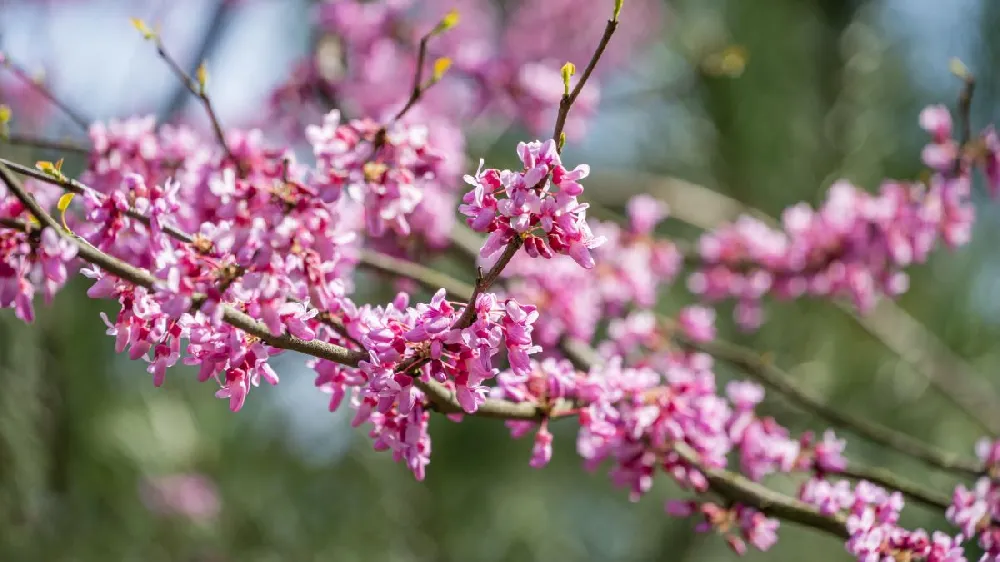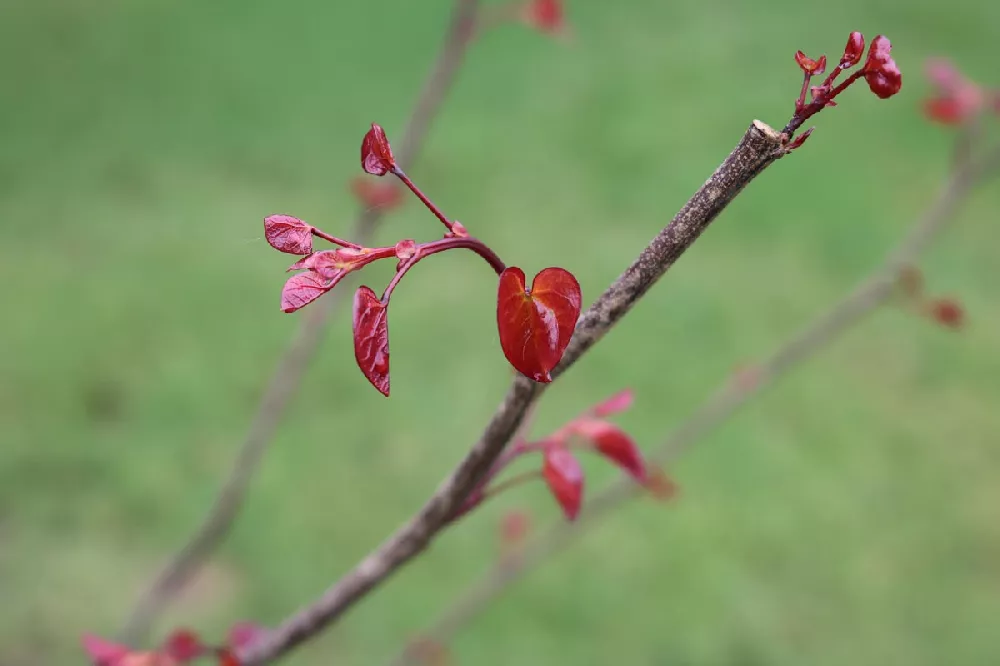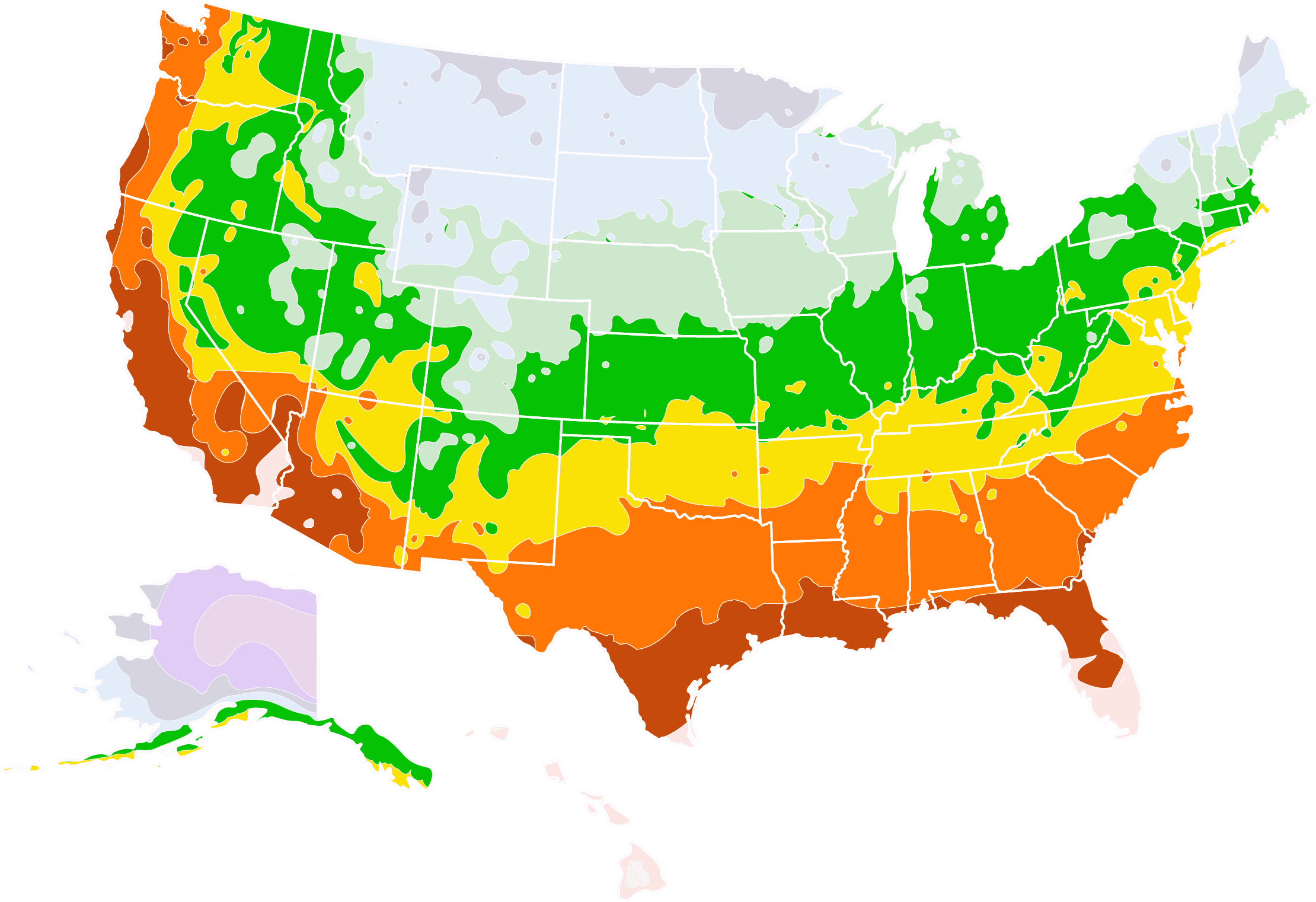- Home >
- Redbud Trees >
- Oklahoma Redbud
Oklahoma Redbud for Sale - Buying & Growing Guide
- Ships in 1-2 days
- 1-Year Warranty Eligible
- Pots or accessories are not included unless specified in the product options.
Shipping Details:
Once your order is shipped, you’ll receive an email with a tracking number and estimated delivery date. Most orders ship immediately, but some items are seasonal and may only ship in spring or fall. These products are noted on the website.
The Oklahoma redbud tree, known botanically as Cercis canadensis var. texensis 'Oklahoma,' is the ideal small tree for nearly any residential property. This cultivar, like all redbud trees, blooms in early spring with large, dense clusters of vibrant purple flowers. After the flower fades, the leaves emerge, sometimes with a slight pinkish hue that fades as the season progresses. Those leaves are one of the key ways to distinguish the Oklahoma redbud tree from other redbud varieties, as they have a distinct glossy surface that is not present in related cultivars.
- The Oklahoma redbud boasts dense clusters of purple flowers in spring.
- Heart-shaped leaves have a glossy surface.
- It tolerates drought and a wide range of soil types.
Plant Care
Sunlight

Choose a growing location that receives about four to six hours of light per day.
Watering
Water twice per week during establishment. For established trees, water deeply during droughts.
Fertilizing

Fertilize once in early spring with a general-purpose fertilizer or an organic material, such as compost.
Planting and Care
Planting and Care
Planting instructions
As is true for most redbud varieties, the Oklahoma redbud is not picky when it comes to choosing a growing location. These trees will adapt well to both full sunlight and partial shade. They can also survive in both acidic and alkaline soils and can live in a wide range of soil types, including clay, sand, and loam. To plant an Oklahoma redbud, begin by digging a hole that is as deep as the root ball is tall and significantly wider than the root ball. Backfill while watering, and finish the process with a healthy layer of organic mulch.
Watering and nutrients
Water your Oklahoma redbud tree about once or twice per week during the first few weeks of establishment. For the rest of the first growing season, water about once per week. After establishment, water needs will be low. You’ll likely need to provide a deep watering only during periods of prolonged drought. Fertilization needs for this tree are also low. You’ll need to fertilize just once in early spring with a balanced fertilizer or an organic amendment, like compost or manure.
Pollination
The Oklahoma redbud tree is a self-pollinating species, which means that a single tree holds both male and female reproductive organs. During the early spring, these plants bloom with copious amounts of flowers, each of which holds nectar for pollinators. Insects, including bees, will arrive at this tree to feed on the nectar and are responsible for moving pollen from one part of the tree to another. Typically, pollination occurs easily but is not a specific goal when growing this plant.
Pruning
The ideal time to prune an Oklahoma redbud tree is during the spring, after the flowers have bloomed and just before the leaves arrive. Often, Oklahoma redbuds will grow into an attractive rounded form without pruning. However, pruning can be beneficial to thin the canopy to allow for better air circulation. As always, your pruning goals should include removing dead, damaged, and diseased parts of the tree. When pruning, be sure to use sterile pruning tools to limit the chances of spreading diseases.
Pests, diseases, and animals
The Oklahoma redbud tree does not experience a lot of problems related to diseases, but infections are possible. When an infection does occur, a specific fungus, known as Botryosphaeria, is likely the cause. When this fungus arrives, it will manifest itself via cankers and dieback. Pest infestations can also arise for the Oklahoma redbud and are often more common than disease-related problems. Some of the most common insects to afflict this tree include caterpillars, weevils, scale insects, and treehoppers.
Achieving maximum results
Compared to other popular redbud tree varieties, including the eastern redbud, the Oklahoma redbud is a bit less cold-hardy — it does not survive in regions colder than zone 6. Oklahoma redbuds also tend to develop deep root systems that make it difficult to transplant this cultivar when it is at a mature age. On the plus side, the Oklahoma redbud can be a relatively compact tree, which allows it to fit easily into many planting locations.
FAQs
How large does an Oklahoma redbud tree grow?
What makes the Oklahoma redbud tree different from other redbud trees?
There are a few subtle differences between Oklahoma redbud trees and other redbud tree varieties. First, as the common name implies, the Oklahoma redbud tree is a bit better suited to warmer climates. Unlike other redbuds, which can survive in zone 4, the coldest area in which an Oklahoma redbud can live is zone 6. Another distinguishing feature of this cultivar is its leaves, which are glossier than those of other redbuds and can have a unique pinkish tinge when they first arrive.
How long do Oklahoma redbud trees live?
Oklahoma redbud trees are not the longest-lasting trees you can plant, but they will be around for several decades with the right care. In many cases, Oklahoma redbud trees will have a lifespan of about half a century or more before they begin to naturally decline. Trees that experience infections and infestations are far more likely to die earlier, while those that remain pest and disease-free and receive the proper care are likely to live longer.
Compare Similar Products
You can't add more Product Name - Product size to the cart.
OK